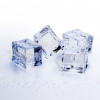Stonehenge Altar Stone came from Scotland
Interview with
Stonehenge, the 5000 year old stone circle on England’s Salisbury Plain, was constructed using a mixture of local and imported rocks: archaeologists had matched some of the key stones to volcanic deposits in neighbouring Wales, and others to Salisbury itself. But one rock - the enormous sandstone “Altar Stone” at the centre - is different. It isn’t local stone, and it isn’t Welsh. So where had it come from? Now, using a new analytical technique involving dissecting the rock grain by grain with a laser to understand its chemical profile, scientists at Western Australia’s Curtin University have come to the surprising conclusion that this key part of the structure has travelled a considerable distance to get to the centre of Stonehenge. PhD student Anthony Clarke is the lead author on the study…
Anthony - The people at Stonehenge didn't leave any written record, so we have to turn to the rocks or the megaliths themselves to understand their culture and motives and the history of prehistoric Britain. Stonehenge is actually made up of different kinds of rocks. The large upright sarsen stones are from the local area, near Stonehenge on the Salisbury Plain. The inner ring of upright bluestones are from West Wales in the Preseli mountains. That leaves the central rock called the Altar Stone. Previous work thought it might have come from Wales in the Brecon Beacons, but the ultimate origin was unknown. So it was the last remaining question in the Stonehenge story.
Chris - How do we know that the different stones came from the different areas? What tells us that they have different geographical origins?
Anthony - The large sarsens have a distinct chemistry that has been matched to rocks that are lying on the surface of the Salisbury Plain. The bluestones are igneous rocks, which means they formed from cooling and freezing magma deep beneath the Earth's surface. That allows us to figure out their age because we can figure out when this crystallising process happened. When we do that, we can figure out that they're from these particular mountains in West Wales. But the Altar Stone is a bit different, it's a sandstone, which means it's made up of squished together sand, much like sand on the beach. Now that means that the Altar Stone doesn't have one true age per se. It's lots of different grains of lots of different ages and chemical characteristics all squished together. So figuring out the age of the Altar Stone is a bit more tricky compared to the other rocks at Stonehenge.
Chris - How have you done it then?
Anthony - So if we analyse the Altar Stone, of course, we can't just go up to the Altar Stone and smash off a bit with a hammer, but we have samples collected from the Altar Stone during previous archeological digs in the early 20th century, and very thin slices of rock have been prepared from these samples. And we can look at them under the microscope and we can also hit them with a very microscopic laser, the width of a human hair. When we hit these grains within the Altar Stone, it ablates a very, very small portion of that grain. We can then analyse this gas that comes off from these grains and analyse its chemical and thus isotopic characteristics. Now isotopes let you figure out the age at which that tiny grain or mineral crystallised much like the bigger rocks at Stonehenge, the bluestones, but we are doing it on a grain by grain kind of scale.
Chris - But how do you then map that to where it came from? That gives you a sort of chemical and a structural fingerprint for that stone, how do you then take that away and say, I think it came from wherever.
Anthony - Yeah, that's right. You build up this profile, this fingerprint, it's like a DNA sequence for a rock so you can figure out the parent rocks, the mountain ranges that were eroding and shedding their unique age and chemical characteristics into the rock that would eventually become the Altar Stone. Once we build up this fingerprint of the Altar Stone, we can just simply compare it to rocks throughout Britain, Ireland and Northern Europe. When we did that, it really was so distinctly Scottish. It helped us match to the Orcadian Basin of Northeast Scotland, which is about 700 kilometres away from Stonehenge.
Chris - But that still means that someone thousands of years ago, a group, transported something weighing a huge amount, hundreds of kilometres. Why would they pick on that particular rock? Is there any kind of insight into why they liked that rock and brought it all that way?
Anthony - That's the really fascinating, perhaps unanswerable question in this story. If you look at the Altar Stone, I was there yesterday looking at the rock, it's this rather ordinary looking green/grey sandstone that's partially buried in the Earth. I wouldn't personally transport it over 700 kilometres away from Scotland. But rocks have always fascinated humans, we've always sought the perfect stone for our construction. Today, millionaires will adorn their bathrooms with Calcutta marble from Italy. I don't understand why they do that, and perhaps the average Neolithic Britain felt the same way about the Altar Stone.
Chris - Oh, I might get rid of my bathroom tiles then. But more seriously, Anthony, is there any other geological process that could have brought that stone to a nearer venue, and so they only had to transport it less far, perhaps. We know there were ice sheets and various glacial processes, could it have got there by chance? And then they just thought, well, that's a handy stone, and moved it from the near neighbourhood.
Anthony - That would've been very convenient for a Neolithic Britons, if vast sheets of ice had conveniently delivered it to Salisbury Plain. But if we look at glacial reconstructions during the previous million years or so, when the United Kingdom was a frozen tundra, ice was actually flowing northwards from the vast mountains of Scotland, and it was taking material away from the Salisbury Plain, so it really doesn't look like a natural process carried the Altar Stone. There's also no evidence of glacial movement in the Salisbury Plain, nor on the Altar Stone itself. We don't see any scratches of ice, we don't see evidence of it being carted 700 kilometres away in ice.
Chris - You began by saying that the people who built Stonehenge left us no written record. I suppose their writing is their creation of this interesting structure. What can we infer then, or deduce, about them, what they knew, what technologies they had, based on what you've now shown about the origin of this stone?
Anthony - These are really fascinating questions and it's going to really help us reconsider the connectivity of Neolithic Britain given that we have these two population centres on the Salisbury Plain. And then of course, up in Orkney, which has some really famous neolithic monuments. Skara Brae, the Ring of Brodgar, were these two population centres connected? For many archaeologists, Orkney, Northeast Scotland, was a centre of trade, population and farming. There is also evidence that points towards Neolithic Britain having quite capable shipping technology. We find evidence of amber, pottery and accents all throughout the North Sea area. That must have been delivered to these islands on boat. There's evidence of cattle being moved to Orkney. So if they're able to move substantial cattle, perhaps the Altar Stone was part and parcel.










Comments
Add a comment